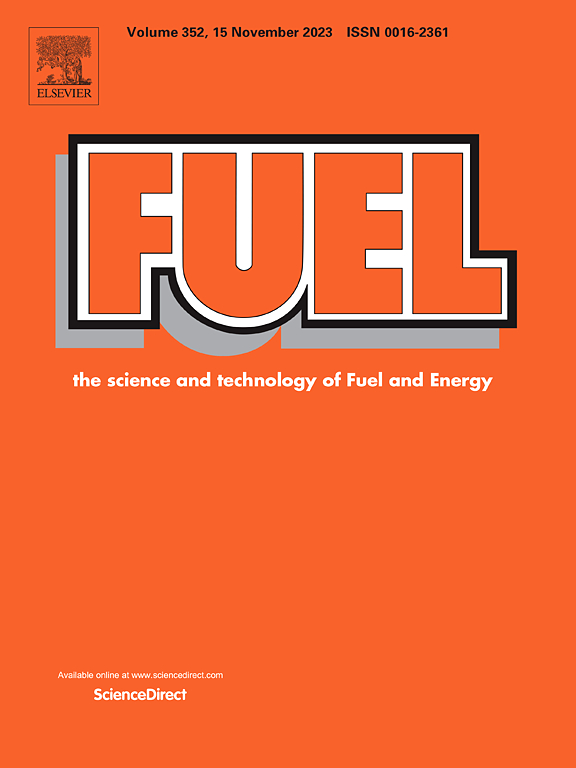Conversion of residual oil of ethylene tar into carbon precursors: Design, synthesis and mechanism exploration
IF 6.7
1区 工程技术
Q2 ENERGY & FUELS
引用次数: 0
Abstract
To achieve full utilization of ethylene tar (ET), it is of imperative importance to convert its residual oil (RO) into high-valued materials. A novel strategy of RO utilization was developed by preparing condensed polynuclear aromatic (COPNA) resin using a tailor-designed novel crosslinking agent (4-ter-Butyl-2,6-bis(hydroxymethyl)phenol, TBBP) to react with RO, followed by the carbonization into high-valued carbon materials. RO was first thoroughly characterized to verify the feasibility as an excellent feedstock for resin preparation. A novel crosslinking agent, TBBP, was designed and synthesized to introduce oxygen-containing functional group into resins, intended to improve the electrochemical performance of the resulting resin-derived carbon. TBBP was demonstrated to possess enhanced electrophilic-substitution reactivity than 1,4-benzenedimethanol (PXG). It was then shown to be conducive to prepare resin from RO to yield TBBP-COPNA, with a maximum yield of 87.52 % and an oxygen content of 6.98 % under 1:1 (RO:TBBP), 180 ℃, 3 wt% catalyst dosage and 8 h. The carbon derived from TBBP-COPNA exhibited superior Na-storage performances to the one derived from PXG-COPNA, with a reversible capacity increased significantly from 122 to 250 mAh/g at 50 mA/g. Moreover, synthesis mechanism of TBBP-COPNA was explored through simulation. It was further revealed that the introduction of polar functional groups into resin was an effective method to improve electrochemical performance of resin-based carbon. The current strategy not only provided a high value-added utilization strategy for RO, but also developed a novel design and synthesis method of COPNA resin with polar functional group, thereby substantiating great potential to produce superior carbon anode for the Na-storage.

求助全文
约1分钟内获得全文
求助全文
来源期刊

Fuel
工程技术-工程:化工
CiteScore
12.80
自引率
20.30%
发文量
3506
审稿时长
64 days
期刊介绍:
The exploration of energy sources remains a critical matter of study. For the past nine decades, fuel has consistently held the forefront in primary research efforts within the field of energy science. This area of investigation encompasses a wide range of subjects, with a particular emphasis on emerging concerns like environmental factors and pollution.
 求助内容:
求助内容: 应助结果提醒方式:
应助结果提醒方式:


